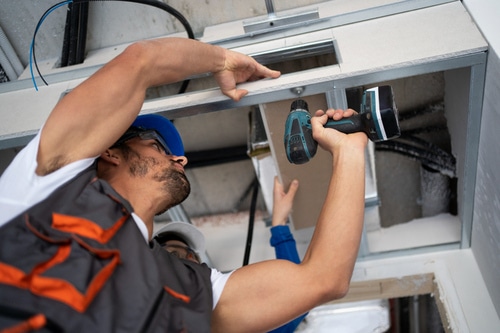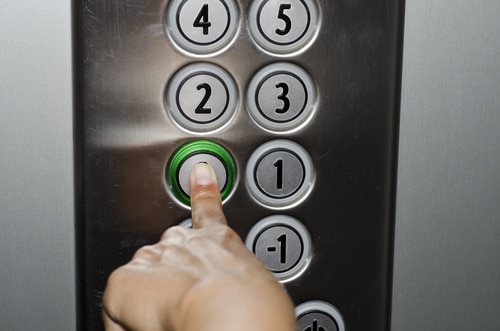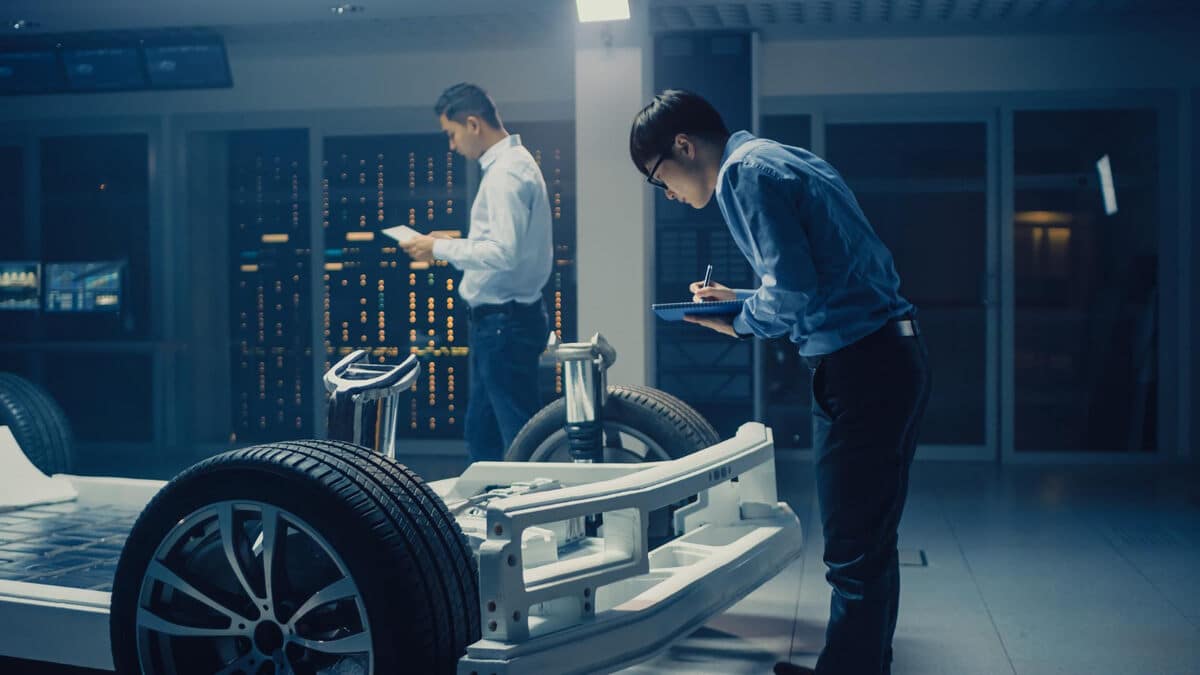
- ai field service management
- elevator maintenance
- Field Service Management
- fsm
How Elevator Maintenance Software Can Help Reduce Downtime
Elevators are an integral part of the effective functioning of residential buildings, commercial complexes, hospitals, and industrial facilities. Their failure can result in a temporary inconvenience, or worse, downtime that impacts people’s safety, disrupts schedules, and causes huge operational losses.
As your team transitions to proactive AI-powered field service management, rather than relying on reactive fixes, the company can significantly reduce downtime and ensure that its elevators are reliable, efficient, and safe.
In the U.S., people travel more than 2.55 billion miles on elevators and escalators each year, with elevators in the United States making 20.6 billion passenger trips per year (NEII).
The stakes are high, and property owners, facility managers, and service providers are all affected. Technology is key to preventing sudden closures in today’s fast-paced world. That’s where elevator maintenance software for field service management comes in.
The Role of Elevator Maintenance Software in Modern Service Operations
With the evolving landscape in the field service industry, there is also a need for smarter, quicker, and more efficient systems. Old-fashioned ways of managing elevator service schedules and inspections, such as spreadsheets, whiteboards, and paper checklists, just do not work anymore.
The latest field service management software used in the elevator industry provides end-to-end visibility of all service activities. These tools help to manage a well-organized, real-time workflow. They also empower field and office workers to track historical maintenance records and schedule the right technician at the right time.
Companies such as Praxedo are leaders in this evolution, enabling elevator service providers to remain competitive through the use of AI-powered processes.
Automating the Elevator Maintenance Schedule for Optimal Uptime
Automation of the elevator maintenance schedule is one of the greatest advantages of using elevator maintenance software. This eliminates guesswork and human error, ensuring each elevator receives the required maintenance at the right time.
Automation enables service teams to pre-configure maintenance schedules based on usage, asset type, and manufacturer guidelines. The software automatically sends reminders, allocates jobs to available technicians, and updates job statuses in real-time. This systematic and regular practice prevents missed maintenance, which causes unnecessary failures.
Automation not only saves manual work but also increases compliance, enabling businesses to achieve a higher level of safety in the long term.
Preventive vs. Reactive
Responding to elevator breakdowns after they have occurred can result in expensive emergency fixes, dissatisfied tenants, and potential liability issues. A more effective field service approach is to develop a detailed elevator preventive maintenance schedule plan that identifies problems before they become serious.
Through planned inspections, lubrication, part replacement, and software diagnostics, service providers can prolong the life of equipment and reduce unexpected downtime. This preventive measure is easy to implement and monitor with the assistance of elevator maintenance software.
Technicians receive notifications when a component requires service, and managers can track trends to identify which components or issues are recurring and which components require more frequent service.
Streamlining Field Operations with Elevator Field Service Software
It is not a simple task to manage field technicians at various locations with diverse priorities and skills. Elevator field service software provides managers with real-time visibility of technician locations, job status, and resource availability, enabling more efficient dispatching and improved coordination.
Mobile-friendly solutions also enable technicians to access job details, site histories, and instructions directly on their devices. They can add photos, update job status, and log parts used in the field. This immediate feedback loop minimizes delays, enhances communication, and facilitates the resolution of issues more quickly.
At Praxedo, we offer strong features in this respect, enabling elevator service providers to have the necessary means to ensure high levels of performance and responsiveness.
Real-Time Monitoring & Inspections with Elevator Inspection Software
One of the most important factors of any maintenance strategy is inspection. It’s not just a matter of compliance; frequent inspections also provide the first chance to spot early warning signs of possible issues. Service teams can transition to intelligent, paperless processes by utilizing elevator inspection software to replace outdated paper checklists.
The software helps the inspectors to work along pre-set protocols, collect consistent data, and create detailed reports automatically. Such reports are stored in the cloud and can be retrieved by office staff, regulators, or clients as needed.
Historical information can be used to compare performance and assess risk. By identifying which models or parts of the elevator are more likely to wear out, service providers can adjust their maintenance strategy and improve uptime performance.
Optimizing Workforce Allocation Through Elevator Scheduling Tools
In field service, time is a very scarce resource. With many clients and strict service-level agreements (SLAs), it is crucial to dispatch the correct technician to the correct location at the right time to ensure smooth operations. Smart scheduling solutions are important in this respect.
Smart scheduling elevator maintenance software can assign jobs based on multiple factors, including technician skill set, availability, proximity to the job site, and even real-time traffic data. This will enable maximum utilization of your workforce, saving travel time and increasing the number of jobs completed in a day.
Dynamic job re-scheduling, re-assignment, or escalation is also useful in case of emergencies or when priorities change. Service managers can make swift and decisive decisions without jeopardizing the entire schedule.
Integration with IoT and Smart Building Systems
Due to the increasing advancements of elevator systems, it is becoming very important to integrate them with smart building technologies and IoT devices. The contemporary elevator management software enables real-time connection with sensors that detect factors such as vibration, temperature, or usage frequency. Such sensors can send information to trigger maintenance work, depending on the actual wear and usage, rather than relying solely on time-based estimates.
This shift to condition-based maintenance is transforming the industry. This ensures that the work of service teams is concentrated where it’s most required, reducing the number of useless visits and avoiding preventable breakdowns. Scalable and easy to integrate, the collaboration between machine intelligence and human expertise is seamless with such a platform as Praxedo.
Alerts and predictive diagnostics that run on IoT assist in making the maintenance operation more responsive and agile, leading to less downtime and longer asset life.
Leveraging Elevator Service Management Software for Data-Driven Decisions
Service reports, inspections, and IoT devices may provide a lot of data that is difficult to interpret without the proper tools. That’s where elevator service management software comes in. It converts raw data into actionable insights using customizable dashboards, reports, and KPIs.
With the help of trend analysis, managers can identify which elevators or parts of the elevators are not functioning properly, which technicians are the most efficient, and which areas are most frequently disrupted. This enables more strategic decision-making and improved control over maintenance budgets.
Customizing Elevator Management Services for Specific Needs
Buildings are not the same, and neither are their elevators. Some are located in busy office towers, while others are situated in older residential buildings or specialized industrial environments. This is why software platforms must support customizable workflows that suit a particular environment.
The flexibility of the elevator management services enables companies to customize forms, checklists, reporting templates, and SLA settings according to the specific needs of a client or a particular type of asset. This flexibility is the secret to consistency and quality control, whether it is one building or a city-wide network.
Customization is also available for branding, communication preferences, and performance analytics. Clients will have a personalized experience that strengthens professionalism and trust, and internal teams will remain committed to achieving operational objectives.
Compliance and Documentation Made Simple
For elevator operations, compliance with regulations is non-negotiable. Failure to perform an inspection or record a service may lead to a fine, liability, or, even worse, a safety incident. Elevator inspection software helps in recording all inspections in a proper manner with digital time stamps, signatures, and evidence.
Elevator maintenance management software can help a business prepare for a regulatory review or internal audit, thanks to its digital audit feature. Records are stored safely and can be retrieved almost instantly, eliminating the need for bulky paperwork or manual searching.
This level of accountability pleases regulators and fosters trust among clients.
Elevating Customer Satisfaction Through Better Communication
Transparency, speed, and accuracy are the expectations of customers today. Whether they are a building manager, property owner, or facilities coordinator, clients want to know what is going on with their elevator systems in real-time.
Clients can receive automatic updates when a technician is en route, at the site, or has completed a job. Such communication reduces uncertainty and develops long-term relationships. Businesses that provide visibility of their service history and schedules are reliable and committed, which are the values that foster loyalty and reputation in competitive markets.
These features are built into Praxedo, enabling elevator service companies to provide a high-level customer experience at every touchpoint.
Conclusion
Downtime is not only a technical issue but also a liability to the business. In the era of reliability, safety, and efficiency, relying on outdated systems or manual operations is a recipe for disaster.
With the right software, all processes, from technician dispatch to compliance documentation, become simpler, quicker, and more precise.
Whether managing a single high-rise or a national portfolio, the time to modernize is now. It is not only smart, but a necessary move to invest in AI-powered field service management tools, such as Praxedo. Contact us or book your demo to learn how our elevator field service software can help your business.
Our similar articles.
-
- Field Service Management
- field service management software
- digital transformation
Rethinking Your Digital Transformation Roadmap: Key Insights from Industry Leaders
September 24, 2024 -
- customer experience
- fsm
- customer service
The Evolution of Service: A Rolls-Royce Perspective on Outcome-Based Business Models
November 10, 2025 -
- Technician
- Field Service Management
- Field Service Software
- mobile
Essential career advancement tips for field service technicians
December 20, 2023





